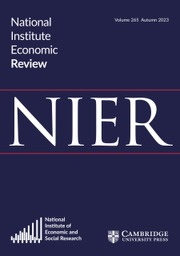No CrossRef data available.
Article contents
OPEN INNOVATION: TOWARD AN ORGANIZATIONAL DIGITAL INNOVATION
Published online by Cambridge University Press: 19 December 2024
Abstract
Organizations are utilizing digital technologies to modernize their innovations in today’s competitive and rapidly changing market environment. This study’s goal is to explore the influence of open innovation on firms’ digital technology integration, aiming to enhance their innovation skills and produce competitive, adaptable digital solutions. The methods used include analysis, synthesis, and generalization. Organizations can enhance open innovation by acquiring knowledge, capabilities, ideas, technologies, and information for new products and services, with the relationship between open innovation and digital innovation accelerating their capabilities. The study emphasizes the challenges organizations face in modern IT, emphasizing open innovation, access to external knowledge, and the need for improved internal production efficiency and competitiveness. The practical value of this study is manifested in the identification of strategies for optimizing open innovation for their transformation into digital solutions.
- Type
- Research Article
- Information
- Copyright
- © The Author(s), 2024. Published by Cambridge University Press on behalf of National Institute Economic and Social Research


